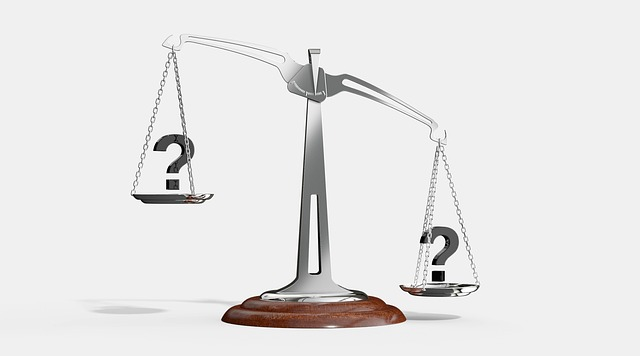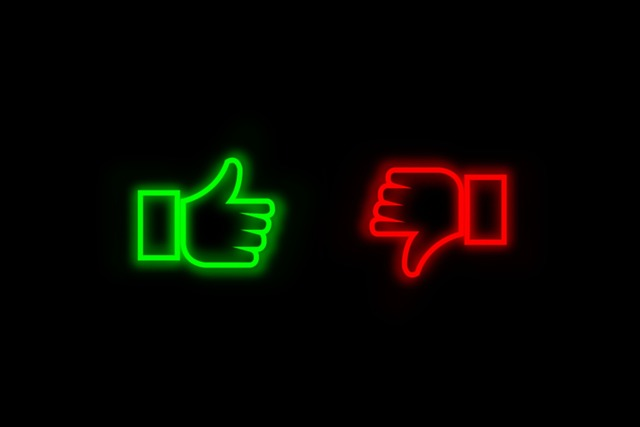What is a Business Line of Credit?
A business line of credit (LOC) gives you a set credit limit, which you can draw funds from as needed. Many businesses like the flexibility and versatility of the line of credit because, unlike a business loan, you don’t have to take the total amount at once and only repay what you draw, plus interest and applicable fees.
Lines of credit are an excellent option for covering cash flow gaps and unexpected expenses. Once a credit line is active, you can usually get the funds transferred to your business bank account in as little as 24 hours. The quick funding time is nice to have in your back pocket should a sudden working capital need arise.
Business lines of credit range in terms of credit limits, interest rates, and terms. A business line of credit through United Capital Source offers:
- Credit limit: $1,000-$450,000.
- Terms: up to 18 months.
- Rates: starting at 8%.
- Funding time: 1-3 business days.
Unsecured vs. Secured Business Line of Credit
An unsecured business line of credit means no collateral is involved, although you might need to sign a personal guarantee. Secured business lines of credit mean you offered some form of collateral in case of default. The collateral provides extra security for the lender, hence the term.
Unsecured lines of credit typically have lower credit limits and higher interest rates. If you want a large credit limit, it would be best to offer collateral, such as real estate or liquid assets.
How do Business Lines of Credit work?
Obtaining a line of credit requires working with a bank, credit union, or alternative financing facilitator, like United Capital Source. The financial institution issues the line of credit and your account, from which you can draw the funds.
The money goes into your business checking account. Most lenders can provide same-day or next-day fund transfers once your account is set up. You then use the money for working capital or other business purposes.
Lines of credit usually have terms ranging from three to 18 months. You must repay the draw plus interest within the stated terms. Your minimum payment due will be set to keep you on schedule to repay the draw within the allotted timeframe.
Revolving vs. Non-Revolving Lines of Credit
A revolving credit line (like we offer here at UCS) replenishes as you pay off the drawn amount. For example, if you have a credit line of $150,000 and draw $25,000, your available credit drops to $125k. Once you pay off the $25,000 (plus interest), it returns to $150k. If you only paid $10k, it goes back up to $135k, and so on.
With a non-revolving line, the credit limit decreases each time you draw funds but doesn’t replenish. Once you’ve drawn and repaid all funds, the account closes, and you must reapply. Revolving lines of credit are the most common.
Lender-Specific Rules
Some lenders set specific rules on when you must draw funds and how much you can draw at one time. Some lenders mandate you must make your first draw within 30 days of activating the line. Others state that your first draw must be for a minimum amount, such as $5,000.
Many lenders include a draw fee as part of your line of credit. Draw fees range between 1.6%-2.5% of the draw amount. For example, if you have a 2% draw fee and take out $20,000 against your credit limit, you’ll incur a $400 fee.
What are the rates for a Business Line of Credit?
Business credit line rates can vary significantly, depending on the lender, credit limit, credit history, time in business, and industry. Rates typically range anywhere from a 4% to 60% APR. Lines of credit through UCS start at 8%.
Let’s look at comparisons for the most popular line of credit lenders.
Wells Fargo
Wells Fargo bank offers revolving lines of credit ranging from $10,000-$150,000. The commercial bank doesn’t publish a minimum credit score but does require a minimum of two years in business. It can take up to 10 business days to fund a line of credit with Wells Fargo. The bank’s line of credit interest rates range from Prime + 1.75% to Prime + 9.75%.
Bluevine
Bluevine is a leading online lender that offers lines of credit up to $250,000 on terms of either 6 or 12 months. Interest rates range from 4.8% to 51%.
Ondeck
OnDeck offers business credit lines ranging from $6,000 to $100,000 on a 12-month term. You’ll need a credit score of 625, at least one year in business, and annual revenue of $100,000 to qualify. The lender uses an APR, which can be anywhere from 29.9% to 97.3%.
Fundbox
Fundbox is an online lending platform that offers short-term lines of credit for small and new businesses. You can get a line of credit from $1,000 to $150,000 on 12- or 24-week terms. Interest rates begin at 4.66% for 12-week terms and 8.99% for 24-week terms.
Am I eligible for a Business Line of Credit?
Each lender sets different eligibility criteria regarding personal and business credit scores, time in business, and annual revenue. Most lenders look at your business’s financial performance to determine if you have the cash flow to support repayment.
Generally speaking, commercial banks have stricter qualifications and take longer to approve and fund a line of credit. Online lenders typically offer lower approval requirements with faster applications and funding times.
At UCS, approved businesses we work with usually meet the following requirements:
- Credit score: 550+.
- Time in business 6+ months.
- Annual revenue: $75k+.
How to apply for a Business Line of Credit:
Here’s how to apply for a small business line of credit with our network of lenders:
Step 1: Determine how much funding you need
Unlike other loans, LOCs are often not pursued with specific investments in mind. After all, you’re supposed to apply before you need the money. For this reason, aspiring borrowers might not know exactly how much funding to request. So, think about how you’ll most likely use the funds and why you are applying in the first place. This will help us understand why you’re requesting this amount.
Step 2: Gather your documents
Depending on your credit history, you might not need all the following documents. However, it’s better to have them on hand just in case:
- Business bank account statements from the past three months.
- Driver’s license.
- Voided check from your business checking account.
Step 3: Complete the application
You can begin the application process by calling us or filling out our one-page online application. Either way, you’ll be asked to enter the information from the previous section along with your desired funding amount.
Step 4: Speak to representative
Once you apply, a representative will reach out to you to explain the repayment structure, rates, and terms of your available options. This way, you won’t have to worry about any surprises or hidden fees during repayment.
Step 5: Receive approval
If and when approved, funds should appear in your bank account in 1-2 business days. Once you start drawing funds against your credit limit and paying them off, you’ll begin to build your business credit.
What are the advantages of Business Line of Credit?
With a business line of credit, you get immediate access to working capital when you need it. You then only have to repay what you borrow and can make minimum payments, unlike a business term loan where you receive all the money at one time and then have to repay it in fixed payments no matter what.
The flexibility of a business line of credit allows your business to cover unexpected costs as they come up. Nearly all enterprises experience unforeseen bumps in the road and need financing to get them through it. For example, maybe you’re renovating a storefront and need extra cash for increased construction costs. Or perhaps your sales exceeded expectations, and you need extra cash to purchase additional inventory. Whatever the case, a business line of credit gives you access to money when you need it the most.
Compared to a business credit card, lines of credit typically have higher credit limits and lower rates. If you max out your credit card or borrow too close to the credit limit, your credit utilization goes through the roof, causing interest to skyrocket and your credit score to plummet.
Finally, business credit lines typically have much lower approval requirements than traditional business loans. You don’t need a high credit score, high annual revenue, or a long time in business to qualify.
What are the disadvantages of Business Lines of Credit?
Anytime you borrow money, there are intrinsic risks. Here are some of the drawbacks specific to business credit lines.
With the emergence of new fintech-based lending platforms, more online lenders can offer business lines of credit in as little as 24 hours to businesses with low credit and limited business history. The drawback is that many of these structures, whether secured or unsecured, tend to have high interest rates and fees. Typically, the lower your credit score, the higher your interest rate.
Lower credit scores and annual revenue usually translate to lower credit limits. Traditional lenders can offer higher limits at lower rates, but the qualifications are far more stringent.
Many lenders willing to work with newer businesses or those with less than stellar credit only offer secured lines of credit, meaning you must pledge collateral to get approval. Even when lenders don’t require collateral, they typically require a personal guarantee.
The best time to apply is before you need the money, but small business owners are very busy and usually don’t consider applying for financing when they don’t need cash. But that is precisely the best time to apply. Not only does it ensure you can access your line of credit in real time, but you’ll typically get a better interest rate when your cash flow is strong.
Business Line of Credit pros & cons
Pros:
- Only repay what you draw from the line of credit.
- You can draw the funds immediately.
- Lenders accept lower credit scores.
- You can use the funds for a variety of business purposes.
- It’s possible to get an unsecured line of credit.
- Higher limits than business credit cards.
Cons:
- Lower credit limit amounts, especially with bad credit.
- It might require collateral in some cases.
- Most lines of credit require a personal guarantee.
- Higher interest rates with bad credit.
- Unsecured lines of credit carry higher rates and fees.
Frequently Asked Questions
Here are the most common questions about interests for a business line of credit.
How do lenders determine rates for lines of credit?
Lenders consider various factors when determining rates for a business line of credit. From the financial institution’s perspective, the riskier the loan, the more interest it will charge.
Credit History
The first thing lenders try to determine is your creditworthiness. They’ll examine your credit score, and several lenders post minimum credit score requirements. Lenders will dig deeper into your credit history to look for other loan defaults, such as a foreclosure, and bankruptcies, to get a clearer idea of how well you’ve handled borrowing money in the past.
Your Business & Industry
Your personal credit history is important, and so is your business’s credit. Lenders will look at other business loans you’ve taken, if any. Also, the time you’ve been in business is a factor, as more established companies are far less risky than startups and businesses less than a year old. Finally, your industry makes a difference, as some sectors are considered riskier than others.
Loan Features
The amount you receive for your line of credit also impacts your interest rate. The more you borrow, the greater the risk, so lenders typically charge a higher rate. In addition, longer repayment terms tend to have higher interest rates.
Interest Rates in the Lending Marketplace
Most lenders base their rates in part on what the average rates are across the industry. In particular, Prime rates play a significant role. Most lenders will use the Prime rate plus their spread when setting an interest rate.
What are the other costs of a Business Line of Credit?
Beyond paying interest, the other costs you can expect with a business LOC include fees. We’ve discussed draw fees, but additional fees include:
- Origination fee: Usually 0%-10% of credit limit when the line is activated.
- Maintenance fee: A monthly or annual service fee for keeping the line open. Some lenders will charge either a draw or a maintenance fee, but some charge both.
- Annual fee: A small fee, usually $0 to $175, for servicing the line of credit.
- Late fee: A penalty fee (usually 5%) for missing a payment.
Can I get a Business Line of Credit if I have bad credit?
Getting a business line of credit may be possible if you have a low credit score, but you will most likely get a higher interest rate. You should also consider lenders that report to the business credit bureaus so that you can help repair your credit as you make payments.
How do I find the right lender for my Business Line of Credit?
There are several considerations when choosing a lender.
Do you qualify?
You first want to look at the lender’s qualification requirements. You want to ensure you meet the eligibility criteria.
How much can you get?
You want to ensure the available credit limit meets your business needs. If the lender’s maximum credit limit is lower than you need, you must find a different lender.
What is the funding time?
Funding time refers to how long it takes to activate your line of credit. Some small businesses have the luxury of being able to wait a few weeks for funding, but most require faster funding times.
How long do you have to repay?
Most business lines of credit are short-term financing, but there’s still a major difference between having six months or 18 months to repay. You want to ensure the repayment terms work for your business.
Rates for a Business Line of Credit – Final Thoughts
A business line of credit is a powerful financing tool to help your small business, but you should know the cost and rates before you apply. Commercial banks typically have lower rates, but it’s more difficult to qualify, and application and funding times are much longer.
Online lenders and lending marketplaces offer a quick application process, fast approval, and funding in as little as 1-3 business days. The tradeoff is that the cost can run higher.
However, you can minimize the costs of an online lender by researching and finding the best lender for your needs and cash flow. Contact us if you have more questions or are ready to apply for a business line of credit. Our loan executives can guide you through the process and answer any questions.






















